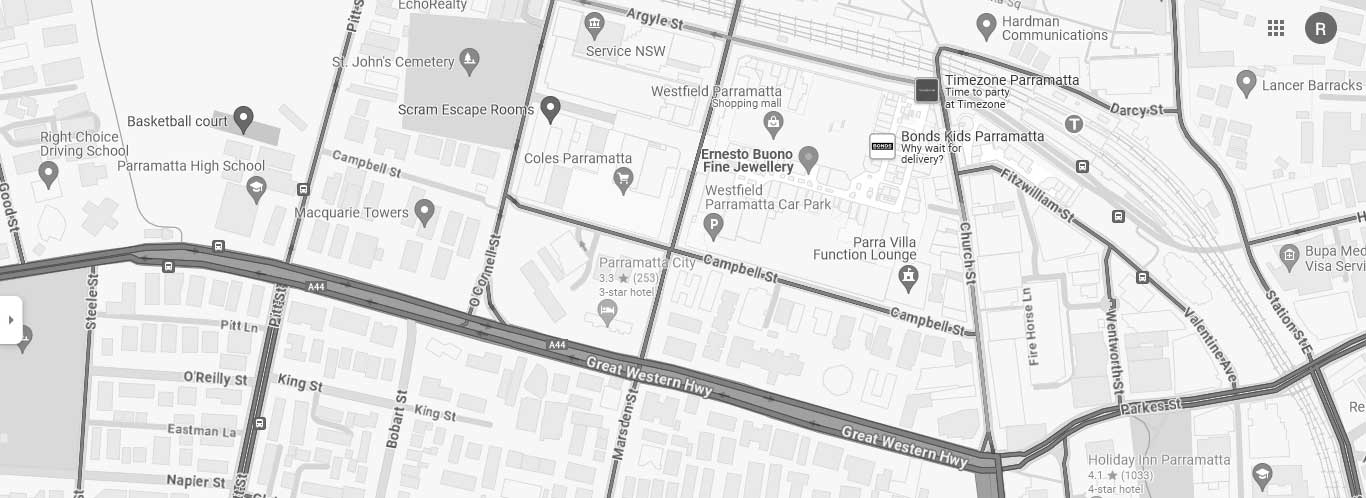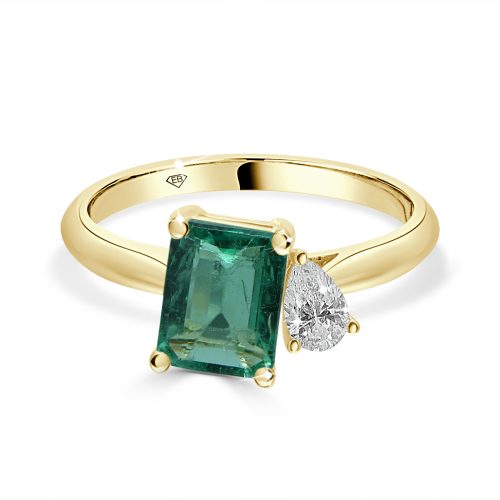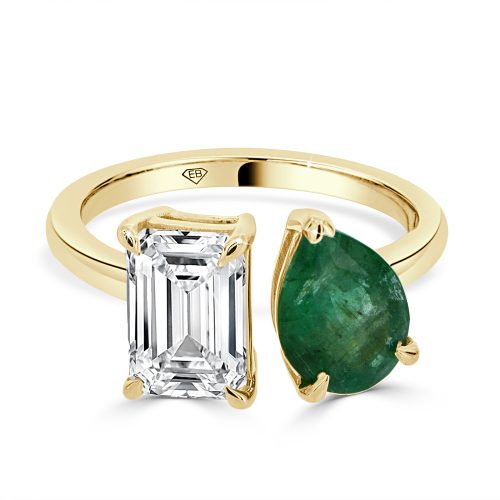Start with the Setting
Diamond Setting
Customise Your Engagement Ring
If you have a specific engagement ring setting in mind, our array of settings offers versatility, available in both lab-grown and natural diamonds, ready to be tailored to your exact specifications.
Can't find the ideal setting? Reach out to us; we're here to listen and assist. Browse below or schedule a consultation with our experienced engagement ring designer, boasting over 20 years of expertise in crafting luxury jewellery. Explore our Ready to Ship collection featuring exquisite lab-grown and natural diamond engagement rings for instant enchantment. Let's craft the perfect ring together.
Showing all 10 results
Featured Products
Can’t find what you like? Did you know that you can customise your own engagement ring or send us photo of what you like and we can make it for you?
Meet our Jewellers and Designers
Meet our team
FAQs About Engagemet Ring Setting
What Are the Most Common Diamond Settings for Engagement Rings?
Several different settings are popular for engagement rings, each offering a distinct look and functionality. Here’s a closer look at the key settings:
- Prong Setting:
- Description: The prong setting is one of the most traditional and popular settings for engagement rings. It typically uses four or six metal prongs (or claws) to hold the diamond securely in place.
- Benefits: Prong settings allow maximum light to pass through the diamond, enhancing its brilliance and sparkle. A four-prong setting offers more exposure and makes the diamond appear larger, while a six-prong setting provides extra security.
- Best For: This setting works well with round brilliant cuts, princess cuts, and oval diamonds, as it enhances their sparkle. It’s ideal for those who want a classic look with a focus on the diamond.
- Halo Setting:
- Description: In a halo setting, a central diamond is surrounded by a circle (or multiple circles) of smaller pavé-set diamonds. This creates the illusion of a larger centre stone and adds extra sparkle.
- Benefits: The halo setting enhances the appearance of the central diamond’s size and brilliance without increasing the carat weight. It also provides a beautiful contrast when using different coloured gemstones.
- Best For: Ideal for those who want a vintage or glamorous look. It pairs beautifully with various diamond shapes like cushion, oval, and round cuts, and is great for making smaller diamonds appear larger.
- Bezel Setting:
- Description: The bezel setting surrounds the diamond with a thin metal rim, holding it securely in place. This type of setting can encircle the diamond entirely (full bezel) or partially (half bezel).
- Benefits: A bezel setting offers maximum protection for the diamond, making it highly durable and less prone to chipping or damage. It’s also great for a modern, sleek appearance.
- Best For: This setting is perfect for those with active lifestyles or who work with their hands, as it protects the diamond from impact. It works well with round, oval, and emerald cuts, providing a contemporary look.
- Pavé Setting:
- Description: Pavé settings feature small diamonds set closely together along the band of the ring, held in place by tiny metal beads. This creates a “paved” effect of continuous sparkle.
- Benefits: Pavé settings add extra shimmer to the ring without detracting from the centre stone. They can be used on the band alone or as part of a halo or side-stone design.
- Best For: Ideal for those who love a lot of sparkle and want a glamorous, eye-catching ring. It pairs beautifully with most diamond shapes and can complement both classic and modern styles.
- Channel Setting:
- Description: In a channel setting, small diamonds or gemstones are set into a groove (channel) within the band of the ring, held securely between two metal walls. The centre diamond often sits in a prong or bezel setting above the channel-set band.
- Benefits: Channel settings offer a sleek look with added sparkle along the band, without any prongs that could snag on clothing. It’s a durable option that protects the smaller stones.
- Best For: Great for those who want a classic style with additional shimmer along the band. It’s a popular choice for round, princess, or baguette-cut side stones.
- Tension Setting:
- Description: The tension setting uses the pressure of the metal band to hold the diamond in place, creating a floating effect where the diamond appears suspended between the metal.
- Benefits: This setting allows almost all sides of the diamond to be exposed to light, offering incredible brilliance. It has a unique, modern appearance that sets it apart from traditional designs.
- Best For: Ideal for those who love a contemporary and minimalistic design. It works best with harder diamonds like round, princess, and cushion cuts, as the setting relies on the durability of the stone.
- Cathedral Setting:
- Description: The cathedral setting uses arches of metal to support the centre diamond, mimicking the architectural style of cathedral ceilings. It raises the diamond above the band, often creating a more dramatic look.
- Benefits: The raised design allows more light to reach the diamond, enhancing its sparkle. It also provides additional support and security for the centre stone.
- Best For: Suitable for those who want a classic yet elegant design. It works well with various diamond shapes, including round, oval, and emerald cuts.
- Three-Stone Setting:
- Description: A three-stone setting features a centre diamond flanked by two smaller stones, which can be diamonds or other gemstones. The side stones are typically set in prongs or bezels.
- Benefits: This setting symbolises a couple’s past, present, and future together, making it a meaningful choice. It adds extra brilliance and can create a larger visual appearance of the overall ring.
- Best For: Ideal for those who appreciate symbolism in their jewellery. It works well with round, princess, cushion, and emerald-cut diamonds, providing a balanced and symmetrical look.
Which Diamond Setting Provides the Most Sparkle?
For those who are looking for maximum sparkle, settings that expose more of the diamond to light are the best options. Here are some of the settings that enhance brilliance:
- Prong Setting: The prong setting is the best choice for maximising sparkle because it allows the most light to enter the diamond from all angles. With minimal metal obstructing the diamond, the light reflection and refraction are enhanced, creating a dazzling effect.
- Halo Setting: The halo setting is another top choice for those who want extra sparkle. The smaller diamonds surrounding the centre stone reflect light into the central diamond, amplifying its brilliance. This creates a stunning, radiant look that’s perfect for those who love a bit of extra glamour.
- Pavé Setting: Pavé diamonds along the band add a continuous sparkle, which can enhance the overall shimmer of the ring. The pavé setting complements the brilliance of the centre stone, especially when paired with a round or cushion-cut diamond.
Each of these settings allows the diamond to shine in its own way, making them popular among those who want their engagement ring to catch the light beautifully.
Which Diamond Setting Is the Most Secure?
When considering a secure setting, look for designs that provide ample protection for the diamond while ensuring it remains firmly in place. Here are the most secure settings:
- Bezel Setting: The bezel setting is one of the most secure options because the metal rim encircles the entire diamond, protecting it from accidental knocks and chips. This makes it ideal for active wearers and those who prioritise durability.
- Channel Setting: Channel settings are also highly secure as the diamonds are set into a groove within the band, reducing the chance of them being dislodged. This setting is especially secure for smaller side stones.
- Prong Setting with Six Prongs: A six-prong setting is more secure than a four-prong setting because it offers additional support, making it less likely that the diamond will become loose over time. This is especially recommended for larger diamonds.
Choosing a more secure setting can provide peace of mind, ensuring that the diamond remains safe and intact through everyday wear.
What Is the Best Setting for an Active Lifestyle?
For those with an active lifestyle or who work with their hands, durability is a key factor when choosing a diamond setting. The following settings are particularly suited for an active lifestyle:
- Bezel Setting: As mentioned, the bezel setting offers excellent protection for the diamond, making it ideal for those who are active. The metal rim safeguards the edges of the diamond, reducing the risk of chipping.
- Low-Profile Prong Setting: A lower prong setting keeps the diamond closer to the band, which reduces the likelihood of snagging on clothing or getting caught on objects. This offers a balance between sparkle and practicality.
- Channel Setting: For bands with smaller diamonds, a channel setting is a great choice as it keeps the stones protected within the band, making it less prone to damage during physical activities.
Opting for a durable setting ensures that your engagement ring can withstand daily wear while maintaining its beauty.
What Is the Most Traditional Diamond Setting for Engagement Rings?
The most traditional diamond setting for engagement rings is the prong setting, particularly the solitaire style. A solitaire engagement ring features a single diamond held in place by prongs, often in a simple band that allows the diamond to be the focal point. This style has been popular for decades due to its timeless elegance and ability to enhance the diamond’s brilliance.
Another classic option is the three-stone setting, which has a romantic significance and provides a balanced, symmetrical design. It’s often chosen for its elegant look and the sentimental meaning behind the three stones.
Choosing a diamond setting involves balancing style, security, and how you want the diamond to shine. Each setting offers unique benefits, allowing you to find the perfect match for your lifestyle and personal style. Whether you prefer the classic elegance of a prong setting or the modern appeal of a bezel, there’s a perfect diamond setting for every engagement ring.

Very smooth and easy experience dealing with Ernesto. He melted my old gold and custom made me a necklace that turned out exactly how I wanted it and to great quality. Highly recommend.
- Diab Finianos
The best and most honest jeweler in Sydney , Ernesto is a pleasure to deal with and so are all his staff. I highly recommend Ernesto and his team for quality service and jewellery.
- Steve
Ernesto is the best person to deal with. He will assist and help you with anything possible and he is very easy going with the best prices and always looks after his clients. Highly recommend.
- Matthew Khouchaba
Ernesto and Maria have always provided me with the best service and quality jewelry for years. Highly recommend, best in the business.
- Jeanpaul Maugeri
Always a pleasure to deal with Maria and Ernesto bought both the wedding ring and band from here great quality and great deal thankyou again
- Sam and Sarah
I have to say best dicision I ever made. Ernesto was so helpful and if I could give him more than five stars I would.
- Norman Ghannoum





















